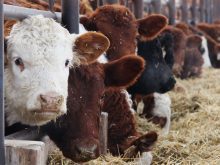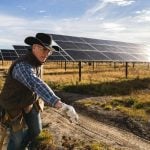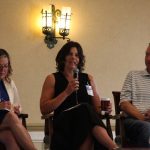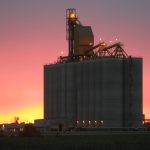BOWDEN, Alta. – As a farm boy growing up in Ontario, Tom McNeely pored over purebred cattle magazines and hoped that one day he would be pictured on those pages with a championship banner from a major show.
That happened this year when his home-raised bull, Golden Oak Outcross 18U, was named spring bull calf champion at the National Western Stock Show in Denver.
“In the Hereford world, winning at Denver is the big one,” said McNeely, who ranches with his wife, Celina, and their two young children, Nathan and Prairie, near Bowden.
Read Also
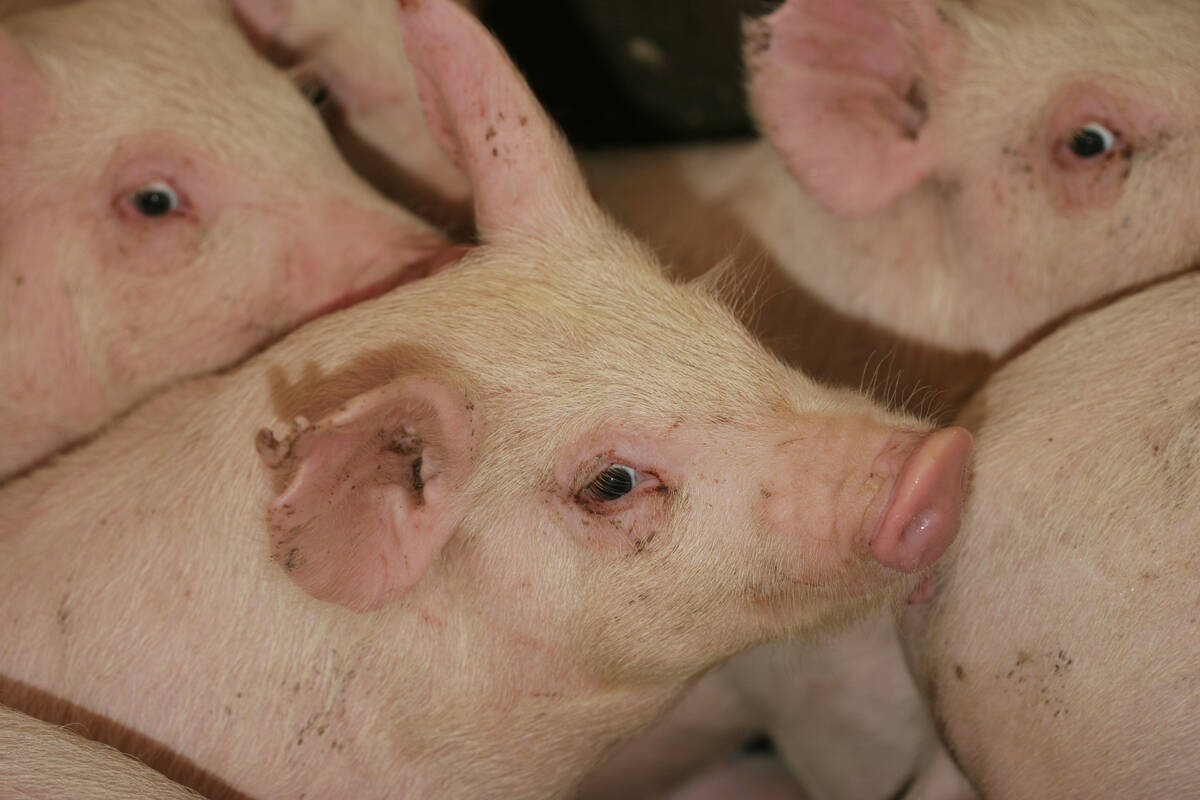
The Western Producer Livestock Report – September 25, 2025
The U.S. national live price average for barrows and gilts was $81.21 Sept. 17. It was $78.37 Sept. 9. U.S. hogs averaged $106.71 on a carcass basis Sept. 17, up from $106.10 Sept. 9.
The win was especially sweet because Nathan worked with the bull as a young calf and won a championship at the national junior Hereford show last summer in Medicine Hat, Alta.
When the McNeelys sold their final interest in their champion at the Denver show to a consortium of high profile Hereford breeders, part of the agreement was to send the ribbons and banners to Nathan.
“He is one of the few six year olds with a Denver banner,” McNeely said.
Besides the Denver championship, the bull was also named reserve grand champion at the Fort Worth, Texas, stock show at the end of January.
With such a high profile win and semen sales underway, the Golden Oak name is starting to appear in desirable pedigrees.
“It is three generations of our breeding on the top side (of the pedigree) and about five generations on the bottom side, so it is all our breeding,” McNeely said.
The grandsire is named Golden Oak 4J Maximum 28M, a former show bull that works as the farm’s main herd sire.
Now seven years old, Golden Oak Maximum was a three time national class winner and as a two-year-old was a reserve senior champion at Canadian Western Agribition.
Two of his sons were shown at the same time in the championship ring.
Last year at the Denver show, Grant Hirsche of High River, Alta., had a winning group at the Hereford carload show in which six of the animals were sired by Maximum.
The sire of the Denver champion is Fusion and was sold to Alan Marshall of New Brunswick. The McNeelys still have the mother on the farm, which is carrying another Maximum calf.
“We’ve had calls asking if we will sell the cow, so we’ll probably sell some embryos,” he said.
A ruminant nutritionist with Cargill, McNeely moved to Alberta 12 years ago and started a herd at Camrose.
Drought forced him to severely cull the herd so when he was transferred to Olds, Alta., he began to build a small purebred polled Hereford herd along with about 100 commercial cows. An embryo transfer program is expected to produce about 40 purebreds this spring.
The McNeelys are building four cow families but their focus is on developing bulls. Customers include neighbours, other purebred producers and private semen sales.
“We really breed for bulls. We’ve had some good females, but we are more about the bulls,” he said.
“We pick for what we want and don’t try and follow the trends or fads.”
In the past, Herefords lost ground to Angus, but McNeely sees a rebuilding phase for the white-faced breed.
“Herefords lost a bit, but in the U.S. junior national show they get 1,400 head at it, so it is really showing how youth has come back to drive Herefords,” he said.
“They are becoming a very viable outcross for the blacks.”
The McNeelys hope that breeding elite cattle will eventually allow them to farm full time. They have had many mentors, including McNeely’s father and other established breeders such as Dave Longshore and Terry Adams.
“They focused on the commercial side of the bulls. They always did well at the shows but it wasn’t their main thing,” McNeely said.
Added Celina: “Everyone has opened up their doors and welcomed us.”
Because McNeely works off the farm full time, Celina and the children do the chores and keep things running. To save on winter work, the cows are swath grazed on barley starting in November.
“All our cows, including our show cows, are out on swath grazing. We don’t put them in show pens. When it is show time we bring them in,” he said.
The family uses the money it earns selling breeding stock to improve the herd.
“They’ve always paid our bills and we have done enough embryo and semen deals that it keeps us afloat.”
Another goal is to prepare the children as the next generation of beef producers.
They have followed their father’s footsteps in the junior Hereford program and have already won their share of prizes just like he did as a teenager. His first major show was at Agribition, and his father was ambivalent as he prepared to travel from Belleville, Ont., to Regina.
“My dad told me I was nuts wasting money on the truck, and we ended up having calf champion,” he said.





